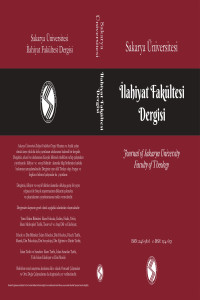Hicrî Dördüncü Asırdan Unutulmuş Bir Muhaddis: İbnü’s-Seken ve es-Sünenü’s-sıhâh el-me’sûra Adlı Eseri
A Forgotten Muhaddis from the Fourth Century of Hijra: Ibn al-Sakan and His Work al-Sunan al-sıhāh al-ma’sūra
Author(s): Mehmet EfendioğluSubject(s): Islam studies
Published by: Sakarya üniversitesi
Keywords: Hadīth; al-Hadīth al-Sahīh; al-Sıhāh; Ibn al-Sakan; al-Sunan al-sıhāh al-ma’thūra;
Summary/Abstract: Ibn al-Sakan, one of the prominent hadīth scholars of the 4th AH (10th AD) century, has not been given the recognition he deserves in the history of hadīth studies. One of the primary reasons for this is that the works he authored, which were considered significant in their fields, have not survived to later periods or the present day. From a young age, Ibn al-Sakan dedicated himself to the study of hadīth. During his time, he traveled through regions between the rivers Jayhun and Nile within the Islamic world, studying under more than forty renowned teachers, some of whom were quite famous. Eventually, he settled in Egypt. During his scholarly travels, he studied Sahīh al-Bukhārī from its famous narrator Muhammad ibn Yusuf al-Firabrī in Khorasan, brought it along with other works to Egypt, and transmitted these works and the hadīths he compiled with his own unique isnads. Sahīh al-Bukhārī was first taught in Egypt by Ibn al-Sakan, and through him, it reached the Maghreb and Andalusia. He also authored works in Egypt such as al-Sunan al-sihāh al-ma’thūrah comprised of authentic hadīths; al-Hurūf fī asmā’ al-sahāba a fundamental source in the field of sahāba biographies and al-Du’afā wa al-matrūkīn dealing with weak narrators. Ibn al-Sakan was a hadīth scholar of the same caliber as figures like Ibn al-Jarūd, Ibn Khuzaymah, Abu Awāna, Qāsim ibn Asbagh and Ibn Hibbān, who also compiled and authored works with the sole purpose of gathering authentic hadīths during the first half of the 4th AH (10th AD) century, following the example of Bukhārī and Muslim from the 3rd AH (9th AD) century. In the sources, when referring to him, he is described with praise as a Hāfız (one who has memorized many hadīths), Imam (a leader in the field of hadīth), Hujjah (a reliable authority in hadīth whose narrations are used as proof), Mutqin (one who is meticulous and precise in hadīth education and teaching), Thiqah (trustworthy), Kathīr al-hadīth (one who has learned many hadīths), Wāsi’ alrihlah (one who traveled extensively to learn hadīths), Musannif (an author in the field of hadīth), Kabīr al-sha’n (one with great prestige among the hadīth scholars) and Ahad al-aimmah (one of the leading hadīth scholars).
Journal: Sakarya Üniversitesi İlahiyat Fakültesi Dergisi (SAUIFD)
- Issue Year: 26/2024
- Issue No: 50
- Page Range: 591-621
- Page Count: 31
- Language: Turkish

